por Marilyn López
I often think about my family trips to Guanajuato, Mexico. Growing up, my parents, younger brother, and I would make the 16-hour drive from Houston every summer to spend time with my paternal grandparents, aunt, and uncle.
We traversed las sierras de Tamaulipas into the low mountain ranges of San Luis Potosi until finally reaching the distinct clay brick and concrete houses del Cerro Gordo, Guanajuato.

This is where I learned to play in the dirt, developed a taste for nopales, and realized that different types of maíz existed (or as the saying goes, “sin maíz, no hay país”). My fondest memories include going grocery shopping with our colorful bolsas de mercado and stopping by la paletería y nevería afterward for a quick indulgence. Back en el rancho, I would help my tía y abuelita wash clothes outside by hand using la tabla, and then hang them up to dry. We would tend to the chickens, horses, and goats with the utmost love and care. Food never went to waste, and water was used wisely. I became aware of the human-nature relationship and our profound responsibility to preserving our environment.
These early childhood experiences in connection with physical and human geography, which were critical to my understanding of the self and the world around me, are only but recuerdos now. It has been 20 years since I last visited my second home. I’m now left to figure out: how do I build a connection for my 3-year-old daughter to the outdoors y con sus raíces mexicanas, when we live more than 2,500 miles away from family and nuestra Madre Patria?
“This is where I learned to play in the dirt, developed a taste for nopales, and realized that different types of maíz existed”
Marilyn López

As a second-generation Tejana through my mother, but first-generation Mexican American through my father, my Chicana identity was formed by way of having what Gloria Anzaldúa calls a “forked tongue” (the ability to speak Spanish and English), through the practice of cultural Catholicism, being raised in a predominantly Latino community, Tejano home cooking, and Mexican images and symbols plastered throughout our home. Thus my identity and resilience were so exquisitely preserved I never had a reason to question it, but for my daughter, who was born and is being raised in the Pacific Northwest, how do I build that same foundation? Because to me culture and nature are intertwined.
Our family’s journey in reconnecting with the outdoors and bridging that cultural and spiritual gap began by first recognizing that Latinxs remain significantly underrepresented in outdoor participation and the environmental movement’s leadership. Not to mention a report published by the Center for American Progress states that “people of color, families with children, and low-income communities are most likely to be deprived of the benefits that nature provides” (July 2020). With this in mind, my husband and I sought out local Seattle organizations and public events focused on connecting Latinx youth and their families to engaging and meaningful experiences in nature. The only ones we found intent on creating access and opportunity to these particular spaces were Latino Outdoors and Washington Trails Association (in partnership with LO).

“Our family’s journey in reconnecting with the outdoors and bridging that cultural and spiritual gap began by first recognizing that Latinxs remain significantly underrepresented in outdoor participation and the environmental movement’s leadership”.
Marilyn López
As a result of Washington’s COVID-19 social distancing measures, we’ve ventured outside more than usual. From bicycle rides in North Bend to camping in Olympia to trail hikes in Anacortes, my husband and I have been intentional about providing our daughter with rich opportunities to explore the outdoors. Children are already natural explorers, so our goal is to integrate nature and outdoor play into our daily lives. Since playgrounds have been temporarily closed, we started going on bicycle rides around our neighborhood in the evenings and going on family-friendly trail hikes on weekends. I started running regularly, and now my daughter enjoys running alongside me too.
Back in May, the Hispanic Access Foundation (HAF) released its 2nd Annual Congressional Toolkit and policy recommendations, where it noted that “recent polls have shown that Latinos care deeply about the environment, a sentiment that is rooted in a culture and history of taking care of the land for future generations.” As reflected in my own experiences, environmental stewardship and conservation are ingrained en nuestra cultura. For now, I want my daughter to grab puños de tierra, breathe in the reassuring smell of fresh pine, and engage in curious play, but ultimately, I hope to raise my daughter to be an environmental justice chingona who will embrace her abuelita knowledge and view the disruption of settler colonialism as a moral obligation.

